The LG G7 Review: A Rushed Attempt?
by Andrei Frumusanu on August 9, 2018 11:00 AM EST- Posted in
- Smartphones
- LG
- Mobile
- LG G7 ThinQ
- LG G7
Display Measurement & Power
The screen of the LG G7 ThinQ has been among one of the most marketed features. The phone distinguishes itself from other devices as it’s one of the rare phones with an RGBW screen. The panel manufactured by LG promises great improvements in terms of power consumption, such as 35% better efficiency thanks to improved light transmissivity enabled by the new white sub-pixel.
The panel uses a proprietary subpixel arrangement called "M+", as such it does not actually have four subpixels per logical pixel as you would expect from a “straight” RGBW implementation. In practical terms this means that there is lower sharpness than a RGB 1440p LCD screen. However at these pixel densities, much like the Diamond Pentile arrangement on OLEDs, I found the visual fidelity loss is absolutely negligible, and results are much better than the 1080 RGBW panel from the Huawei P20.
In terms of display colour management, the G7 doesn’t feature Android 8.1’s wide display gamut framework functionality. Instead LG opts for the usual colour profiles within the display settings.
LG was keen to advertise its settings screen ahead of the G7 launch, which might have lead some, myself included, leading to believe we’ll have some great screen calibration options.
Unfortunately as in the past with LG devices, it seems the company puts very little value in achieving any kind of colour accuracy. The screen has a native gamut of DCI-P3, and essentially all of the profiles included by LG are some sort of variation inside the P3 colour space.
Even the “Expert settings” which includes dedicated sliders for colour saturation, are actually of very little use as the effect is of a non-linear saturation compression rather than a linear saturation reduction. This means that full level colours are still very much hitting the maximum P3 intensities no matter what you do.
As always, we thank X-Rite and SpecraCal, as measurements are performed with an X-Rite i1Pro 2 spectrophotometer, with the exception of black levels which are measured with an i1Display Pro colorimeter. Data is collected and examined using SpectraCal's CalMAN software.
Expert Adjusted:
Default:
On the default profile, the phone’s colour temperature is a horrendous 9000K. There’s very little point in using this as any kind of accurate baseline for measurements as it’s just way off the charts in terms off (in)accuracy.
Indeed the best predefined colour profile is the “Cinema” setting. Even in this setting, the colour temperature reaches 7800K which is still extremely blue. I tried various combinations, and the best possible result you can achieve is by using the “Expert” setting and reducing the blue component to its minimum setting, resulting in something that’s just slightly better than the Cinema setting.
Even in this “best case” setting the accuracy is abominable, as the colour temperature is still way off. While this can be “ok” for most users, what really handicaps the G7 even more is that it’s targeting a really high gamma of >2.5. The accepted industry standard is a gamma of 2.2, and any higher target is meant for speciality professional displays or cinemas. The result is that content on the G7 seems darker than on other phones, and adds to the inaccuracy of its colours.
Brightness of the G7 screen is one of its undeniable strengths. At manual maximum brightness the screen reaches 500nits which is plenty bright.
Where the G7 literally shines though is in its auto-brightness mode. Here the screen boosts up to nearly 1000 nits in bright environmental conditions. In the past this boost was only momentary for LG phones, a particular problem which Matt had covered in the G5 review. The G7 fares a lot better here and this maximum boost brightness is seemingly maintained indefinitely. This makes the G7 the by far brightest smartphone released to date and its outdoors usage is outstanding.

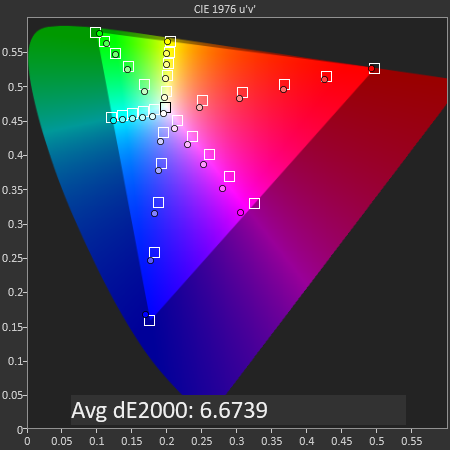
SpectraCal CalMAN
Cinema / Expert Adjusted
In terms of the saturation accuracy, the only reasonable measurements we can do is in the Cinema and manually adjusted Expert modes. Here the accuracy is bad with a dE2000 of 6.78 and 6.67.
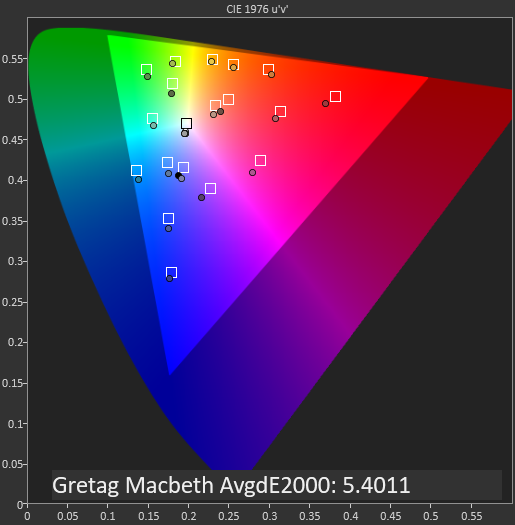
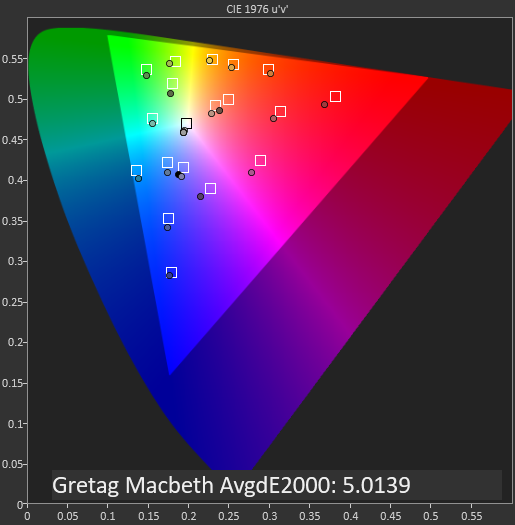
SpectraCal CalMAN
Cinema / Expert Adjusted
Overall the G7 is a massive disappointment when it comes to colour accuracy as it very much singles itself out as the worst calibrated display in recent memory. This has been a pervasive issue for LG and its phones for a long time now, and it seems the company has no interest in changing it. In the past when we’ve brought this up with them, the rationale was that most users prefer the “punchier” colours.
While this could be somewhat excused in the past, the fact that LG promoted the display settings openly as they did just seems overall misleading to potential consumers as it gives the expectation that there would be an “accurate” setting among all those options, as after all, that’s what has been the status quo on Samsung phones for well over 8 generations now, and more recently that’s now also the behaviour of most other flagships from other vendors.
Display viewing angles, contrast, and brightness are otherwise very solid for the G7 – and were it not for the abysmal colour calibration, this might have been one of the best LCD displays released to date.
Display Power - RGBW: Efficient when bright, inefficient when dim
Analysing the RGBW panel’s efficiency is of great interest as it really the single most differentiating factor for the G7. RGBW panels promise better power efficiency by having dedicated white sub-pixels which allow for more light to be able to transmitted from the backlight's LEDs through the LCD panel.
Comparing the screen luminance power at 200 nits, we measure the linear regression in power between the screen at 0 nits and 200 nits.
| Screen Luminance Power Efficiency 100% APL / White @ 200nits |
||||||
| Device | Screen Luminance Power at 200cd/m² |
Luminance Power (mW) / Screen area (cm²) Efficiency |
||||
| LG G7 | 257 mW | 2.93 | ||||
| LG G6 | 363 mW | 4.43 | ||||
| P20 | 411 mW | 4.86 | ||||
| Galaxy S9 | 563 mW | 6.69 | ||||
| P20 Pro | 601 mW | 6.74 | ||||
| Galaxy S8 | 590 mW | 7.01 | ||||
The G7 posts some outstanding figures here as we’re seeing the single best luminance efficiency of any recently or previously measured devices Overall we see the G7 measuring 36% more efficient than the G6, which is very much almost spot on with the 35% that LG advertised for the phone. This is also a much better figure that what we’ve measured on the Huawei P20, which also promised an efficiency boost through its RGBW panel, but which never materialised.
There’s however a big caveat in terms of power efficiency of the phone / display. While the luminance power is extremely good, the overall total device power isn’t where it's expected to be at. The G7 showcased a very large total device minimum brightness power of 563mW which is significantly higher than the G6’s 347mW. Other phones also vary between 300-400mW so this really eats into the device’s efficiency. This regression in minimum power will still skew the overall efficiency for the G7 well into commonly used brightness levels – for example at 200nits, the G7 is actually less power efficient than the G6, measuring at 830mW vs 717mW.
As to what to attribute this power regression to, I don’t know for sure without doing detailed teardown and rail power measurement on the phone. It’s possible the screen has a much less efficient DDIC as it has to drive the more complex algorithms for the RGBW panel, or it could also be some other non-display related component.
It’s only when pushing the brightness a lot higher when the G7 really pulls ahead of any other device. At 500 nits the luminance power is only 1.34W, and at the maximum 1000nits it’s still only using 2W which is way ahead of any other display panel at similar luminosity levels.
Overall what this means for the phone’s battery life is that the lower the daily brightness level you use, the worse off the G7 battery life will seem, and conversely, the brighter you drive your display in usage, the better will the G7 perform when compared to other devices.


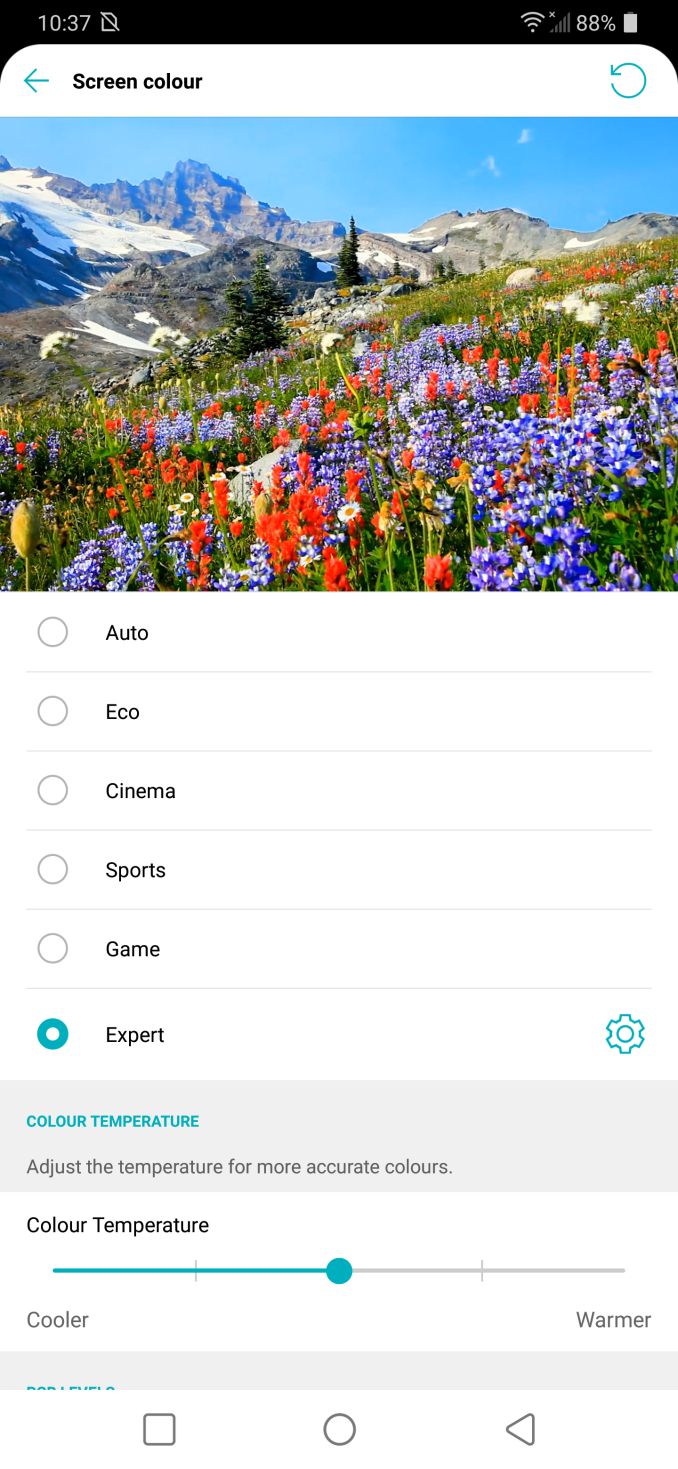

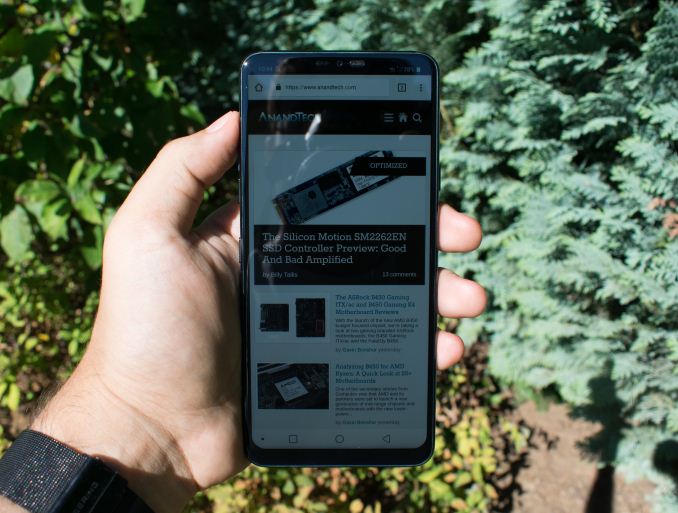
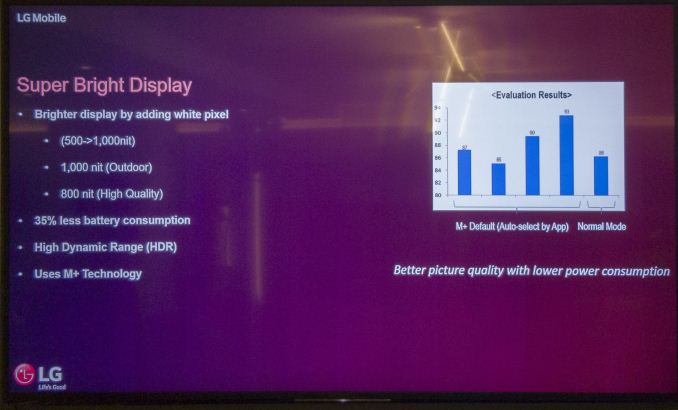








69 Comments
View All Comments
johntmosher - Thursday, August 9, 2018 - link
My LG G4 died from Boot Loop a little over a month after the warranty expired. Verizon and LG did not offer anything to make up for the fact that it was sold to me at a time when they already knew about the Boot Loop failure rates. LG and Verizon are both on my shit list and will stay that way for quite some time.takeshi7 - Thursday, August 9, 2018 - link
I don't care about waterproofing on my phone. LG needs to bring back removable batteries. That's the whole reason I bought their phones. If I want waterproofing I'll go out and buy a waterproof case.UtilityMax - Friday, August 10, 2018 - link
Just buy a power bank. Removable battery as a run time extender is as inconvenient as it gets. Also, some of those low-end smartphones with A53 CPUs as their main cores can get an amazing run time. I can forget to charge my honor 6X and it can still last through the day with just 40% in the morning.jabber - Saturday, August 11, 2018 - link
Yeah I have a LG G4 which has been a great phone but this September I am coming up for three years with it and was going to replace it (probably a G6). However, I remembered I could change the battery and really the G4 still does everything I need so I just got a new battery. Sorted for another year at least...Dragonstongue - Thursday, August 9, 2018 - link
so even higher specs with a low Mah battery, for shame..."modern" smartphones IMO especially the ones that have high to very high end (for phone) specs should not hamper them with "normal" size batteries that tend to be in the range of 2200-3200 they should be targeting a minimum of 3200-4200 range, especially when they have the space to cram a larger battery in there (which many of them do)I just don't get t when "knock off" brands manage to often use a better display AND larger battery, shame of the bigger companies expecting as much $ as they can think to get away charging and using a dinky little battery....example even lower spec G4 Play had a 2800Mah battery REMOVABLE, this is much higher spec but barely any increase in battery capacity, I do not give a crud what OS version it is using, the capacity of the battery matters very much >:(
Xex360 - Thursday, August 9, 2018 - link
The notch again no innovation especially from LG, I had the V20 and the second screen can be very useful and didn't ruin the whole experience, the G6 were nearly perfect beside the decision to use a year old SOC plus no wireless charging.hirschma - Thursday, August 9, 2018 - link
The LG V35 is what should be the flagship. Better specs, better display, more memory, plus the audio, wide angle camera and 845 from the G7. I've had mine for a week, and it's definitely the best phone I've ever had.Hubb1e - Thursday, August 9, 2018 - link
I got this phone after some bad experiences with Samsung and this is the most accurate review of it I've seen to date. The biggest downside for the G7 is the unreliable camera. Some shots are okay, some are downright bad. And most reviewers don't shoot pictures of moving subjects, but the G7 consistently misses focus on moving subjects. All the issues with the camera in this review I've seen in my use. Most of it I think is related to it's inability to auto focus on the correct subject. When using manual focus, the camera actually takes good pictures.The rest of the phone is actually really great. I don't notice the color calibration in regular use, and the speaker is great even if other flagships also offer great speakers. The size of the phone is the best out there. It is comfortable and has a large screen without feeling too wide to hold and use in one hand. While I do mostly use BT headphones, I have a range of wired headphones and when I use them they sound amazing on the G7 in comparison to other phone's weak headphone output.
And the last great feature, but one that was not touched on in this review, is the outstanding idle battery life of the G7. Even with the always on display enabled, the G7 barely loses any charge when idle. If I don't use my phone very much, I can end the day with 80% of my battery life left. Most days I have 40-50% of battery left over even taking pictures, making calls, watching videos, and browsing the web. In comparison to Samsung phones I've had that can lose 5% an hour at idle, the idle power use of the G7 makes it outlast every other phone I've ever used.
SkyBill40 - Thursday, August 9, 2018 - link
I have a V30 after having upgraded from a V10 a while back. Personally speaking, I'd rate the V series above the G series but that's just me. I can say that I've been quite satisfied with my V30 and given how close to each other these phones happen to be, it wouldn't be worth it to "upgrade."LG has come a long way with their phones (that boot loop issue was a killer) and are genuinely competitive with every other high end device out there.
Lavkesh - Thursday, August 9, 2018 - link
Its amazing how average these so called Android flagships are when compared to the iPhone where every details is thought out. The worst thing is that they arent cheap either.